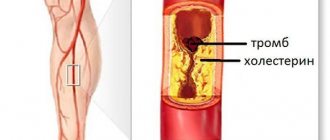Bone cancer – malignant tumors that can develop in any part of the skeleton, most often in the joints. People call cancer any cancer process, but bone cancer (primary formations) are tumors only of cartilage and bone tissue, the so-called sarcomas. They make up only 0.2% of the total number of cancers. Among them, osteosarcoma and Ewing's sarcoma are the most common. In other cases, malignant processes are secondary formations, metastases of soft tissue tumors or other affected organs.
Most often, sarcomas affect the lower extremities - 80% of tumors occur on the knee joints, 15% on the hip bones.
Men have a greater predisposition to bone cancer, and more often the pathology develops in a growing body than in old age - the older generation accounts for no more than 2% of sarcoma cases. This is due to the active division of epiphysis cells, due to which bone growth occurs in childhood and adolescence.
Causes of bone cancer development
Factors that can lead to the appearance of malignant neoplasms:
- Skeletal injuries
- Complications after bone marrow surgery,
- Precancerous neoplasms,
- Genetic disorders and diseases (for example, hereditary Li-Fraumeni syndrome),
- Osteitis deformans (Paget's disease), which is associated with impaired restoration of bone tissue due to deformations, displacements, and fractures. Most often occurs in old age.
- Radiation, ionizing, microwave and electromagnetic radiation. When children and adolescents are exposed to high doses of radiation in the presence of a primary cancer process, there is an increased risk of developing bone cancer. Radiation with a dose of more than 60 gray is considered risky, which can cause cancer in adults.
One of the sources of oncological processes in bones is the degeneration of benign formations, such as: osteoma, chondroblastoma, chondroma, osteomoblastoma, osteoclastoma. Also, formations from connective tissue (lipoma, fibroma), neurofibroma can take a malignant course.
Secondary bone cancer is a consequence of metastasis of malignant tumors of other organs, including the thyroid or mammary glands, kidneys, lungs, etc. A child exposed to radiation for retinoblastoma (eye cancer) may develop cranial sarcoma.
General characteristics of the disease
Bone diseases. Oncology.
By its nature, a malignant tumor on bone tissue is not much different from other forms of cancer. The only difference is the difficulty of detection and diagnosis.
Like other forms of oncology, bone cancer has a primary and secondary nature. Thus, primary bone cancer forms tumors directly from bone tissue. And the secondary form is infection of the bones by cancer cells from other areas of the body.
Bone cancer has two symptomatic characteristics:
- Benign tumor - expressed in a uniform limitation of the infected area
- Malignant formation - indicated by strong and uneven growth of foreign cancer cells
Statistics show that males, especially young people, are more susceptible to bone cancer. They most often have malignant tumors in the pelvis and lower extremities. In mature men and older adults, the bones of the upper body are more likely to develop cancer.
The list of reasons for the spread of cancer cells through bone tissue is very short:
- frequent smoking
- injury
- bone marrow transplantation
- heredity
- Paget's pathology
- radiation or ionizing exposure
Paget's pathology consists of impaired regeneration of bone tissue after injury.
Symptoms and signs of bone cancer
The primary manifestations and symptoms of bone cancer may be thickening of the skin, swelling over the tumor, and recurrent pain in the same area. These signs are a reason for a mandatory visit to the doctor, without self-medication and ineffective procedures, in order to detect a malignant process in a timely manner and not allow the disease to progress to a late stage. In the absence of therapy, a person begins to feel constant fatigue, weakness, general malaise and lack of appetite, and the pain becomes more pronounced and prolonged. Sometimes the functioning of joints and limbs is impaired.
More severe symptoms of bone cancer may later appear:
- the neoplasm becomes inflamed, the skin over it becomes lighter, veins appear, the skin becomes hot,
- bone deformation occurs, sometimes a fracture occurs,
- pain increases, interferes with normal sleep and quality of life,
- due to nausea, poor nutrition, body weight is noticeably reduced,
- if the tumor is localized in the chest area, metastases may occur to the lungs, which are manifested by difficulty breathing.
Free quota surgery: how to get it and what’s changing in 2020
Cancer treatment >> First signs of cancer >> Malignant bone tumors are quite rare.
Primary bone cancer accounts for only 1% of all cancers. However, due to its aggressiveness, osteosarcoma is considered one of the most dangerous types of cancer. The insidiousness of osteosarcoma is that in the early stages, patients do not notice obvious signs of trouble. Clinical manifestations for a long time are sometimes absent at all or do not cause alertness to patients. It is all the more important to know the first signs of bone cancer in order to contact an oncologist in time if necessary.
Pain in the affected bone is the most common complaint of patients with this diagnosis. At first, pain appears only when pressing on the place where the tumor has formed. Later, pain in the affected area occurs on its own and is dull or aching in nature.
Pain from bone cancer can radiate to nearby parts of the body: for example, with a malignant tumor of the shoulder, the arm hurts. The pain intensifies at night and with movement. In the early stages, pain occurs only occasionally, but as the disease progresses, the pain becomes constant.
In addition to bone pain, bone cancer patients often experience symptoms such as nausea and abdominal pain. These phenomena develop as a result of hypercalcemia, which, in turn, is associated with the release of calcium salts from the affected bone into the blood.
Over time, the contours of the bone or area at the site of tumor formation become significantly deformed. Two to three months after the onset of pain, another characteristic sign of bone cancer appears - swelling of the affected area.
Due to pain and swelling, the mobility of the affected limb or joint is severely limited. This sign manifests itself especially quickly when the tumor is localized along the edges of the long bones. Due to limited movement, muscle atrophy develops. At the same time, soft tissues swell and regional lymph nodes enlarge.
At this stage, the tumor can be palpated as a fixed formation against the background of moving soft tissues. The skin in the affected area becomes hot to the touch, pale, and thinned. With large tumor sizes, a vascular network clearly appears on the surface of the skin.
Fractures from even minor impacts and falls are another typical sign of the disease. The tumor weakens the bone or joint in which it develops, leading to these consequences.
Along with specific symptoms, bone cancer has clinical manifestations characteristic of all cancer diseases due to tumor intoxication of the body. We are talking about increased fatigue, decreased performance, general weakness, lethargy, drowsiness, and dizziness. A laboratory blood test reveals low levels of red blood cells (RBCs). The patient's appetite worsens and he begins to lose weight quickly. Body temperature constantly stays around 37C.
Like other malignant tumors, bone cancer gives distant metastases. In this case, the clinical picture of the disease is supplemented by signs indicating damage to one or another organ. Thus, with metastases in the lungs, complaints of chest pain and cough with hemoptysis appear, and the spread of the pathological process to the spine leads to paresis and paralysis.
Classification of malignant tumors
- from adipose tissue (liposracoma),
- from muscle (leiomyosarcoma),
- from the connective tissue (fibrous histiocytoma),
- from the notochord (chordoma),
- fibroblastic (fibrosarcoma),
- vascular (epithelioid hemangioendothelioma, angiosarcoma),
- cartilaginous (chondrosarcoma),
- bone-forming (osteogenic sarcoma, osteosarcoma),
- giant cell (osteoclastoma),
- hematopoietic (myeloma, lymphosarcoma, reticulosarcoma),
- bone tumor (Ewing's sarcoma),
- others (neurinoma).
Common types of bone cancer
Ewing's sarcoma
It develops in long tubular bones, in the pelvis, shoulder blades, collarbone and ribs, and sometimes forms outside the bones - in soft tissues. Its peculiarity is its aggressive development and early metastases to the central nervous system, bone marrow, lungs, and liver. The peak incidence occurs in adolescence from 10 to 15 years.
Osteosarcoma
Develops in the bones of the pelvis and limbs (more often in the lower ones). Long tubular bones are more susceptible to cancer, with cancer more often appearing in the knees, femur and pelvic bones, tibia, and shoulder joints.
Cancerous tumors develop from bone cells, spreading to surrounding tissues through metastases.
The disease affects young people under the age of 30 (they account for up to 65% of cases), more often - adolescents during puberty.
Chordoma
It most often occurs after 30 years of age, while in adult patients the spinal bones in the sacral area are affected, in young patients the disease is localized at the base of the skull. It develops slowly, but relapses often occur after surgical removal. Chordoma with minimal aggressiveness is called chondroid; the aggressive form, prone to metastases, is called undifferentiated.
Histiocytoma (HH)
Mutations in connective tissue cells (ligaments, tendons, muscles) can lead to the formation of fibrous malignant histiocytoma. If the tumor develops in the joints, neighboring lymph nodes and organs are often affected.
Chondrosarcoma
It develops from cartilage tissue, so the tumor can occur in any part of the body where there is cartilage (limbs, shoulder blades, hip joints, skull, trachea, larynx, etc.) Middle-aged and older people are at risk (this is 60% of cases) who have benign formations, for example, osteochondromas. The disease progresses slowly and rarely metastasizes, rarely reaching stage 3, so if the process is detected there is every chance of a positive outcome.
Chondrosarcoma comes in three types:
- Mesenchymal - it grows rapidly, but is highly sensitive to chemotherapy and radiation therapy.
- Clear cell - develops slowly, but after removal it is prone to relapse in the same lesion.
- The differentiated form is the most aggressive; during development it has symptoms of osteo- and fibrosarcoma.
Osteoclastoma (giant cell tumor)
This is the result of degenerated neoplasms in the joints of the arms and legs, which rarely spread to neighboring tissues and organs or metastasize. However, after excision it often occurs in the primary lesion.
Bone cancer: types and features
As we have already indicated, bone tumors can be benign and malignant. In listing the options, we will not dwell on their characteristic symptoms, but will only highlight their inherent features for a general idea.
Benign tumors include:
There are several types of cancer. Knee cancer accounts for about 1% of all diseases of the osteoarticular system and is often a metastasis from the main focus of the pathological process.
Ewing's sarcoma
In skeletal cancers, the tumor develops either from bone or cartilaginous structures. In addition, the disease can be either primary or secondary. Primary cancer is most often diagnosed at a young and even childhood age. Secondary tumors are metastases formed by the migration of malignant cells from other sites in the body. Metastases to the bone are possible with hemangioma, lipoma, reticulosarcoma, fibrosarcoma, etc.
In addition, bone tumors can be both benign and malignant (this is important, since the main symptom of bone cancer will depend on the nature of the tumor):
- A benign tumor has clear boundaries and most often a regular shape. Such a neoplasm is considered relatively safe, since it does not metastasize, although in some cases the cells may degenerate. The processes of cell division and tumor growth are slow. Such diseases include osteoma and chondroma.
- Malignant neoplasms are characterized by rapid and aggressive growth. The tumor does not have clear boundaries and easily grows into surrounding tissues. Such diseases are often accompanied by metastasis and end in the death of the patient.
It is worth noting that most often this disease is diagnosed at a young age (20–30 years), and men are more susceptible to it than women.
As already mentioned, benign tumors are less dangerous, but this does not mean that treatment is not required. So what is the first symptom of bone cancer?
In fact, the initial stages of the disease are asymptomatic in most cases. Only at later stages may any external signs appear.
Stages of oncology
Determined by the location and size of the tumor.
- Stage I (early) – the neoplasm does not extend beyond the bone. Within this stage, stage IA is distinguished, when the tumor does not exceed 8 cm in diameter. If the size is larger, the pathological process has spread inside the bone - this is stage IB.
- Stage II – the tumor is located within the boundaries of the bone, but all signs of cell degeneration into malignant ones are already appearing (impaired differentiation and tissue proliferation).
- Stage III – multiple tissue damage.
- Stage IV - the malignant process spreads to adjacent tissue, metastases form in the lymph nodes and organs.
Main stages of bone cancer development
Many people are interested in the prognosis of the disease. Doctors immediately warn that everything depends on the stage of the malignant tumor:
- First stage. The tumor is not dangerous and affects only the bone. As a rule, it is localized only in one area.
- Second stage. The cancer has not spread beyond the bone, but there are more malignant cells in it.
- Third stage. The tumor affects many areas of the bone, and the cells are susceptible to metastasis.
- Fourth stage. Cancer affects not only the bones, but also the lungs, lymph nodes and other vital organs.
How many people live with this form of tumor? Doctors give a prognosis for 5 years, but it all depends on the condition, age of the patient, characteristics of his body, as well as the stage of cancer.
What research is needed?
- blood test for tumor markers and alkaline phosphatase,
- biopsy (bone marrow, bone tissue),
- x-ray in two projections (helps determine the location, degree of destruction of the bone shell, the presence of a zone of sclerosis, periosteal reaction),
- CT , MRI, angiography (determine the degree and nature of the spread of the malignant process),
- scintigraphy (bone scan to identify the primary lesion and the presence of metastases).
To make a correct diagnosis and exclude inflammatory processes with the same symptoms due to injuries and benign tumors, differential diagnosis is performed.
Reasons for the development of pathology
- Genetic diseases - Rothmund-Thomson syndrome, Li-Fraumeni syndrome, which increase the risk of developing cancer in the bones.
- Pezhdet's disease is a precancerous condition; it leads to pathological growth of bone tissue in people over 50 years of age.
- Negative effects of ionizing radiation. Some are mistaken in thinking that the cause is electromagnetic fields from household electrical appliances, mobile phones, microwave radiation - all this refers to non-ionizing radiation.
- Bone marrow transplantation.
- Mechanical bone injury.
The exact causes of malignant bone tumors are still unknown. Scientists are now actively studying this problem and have already found out how various changes in DNA affect the process of the appearance of cancer cells. They came to the conclusion that most often bone cancer is caused not by hereditary factors, but by external negative influences.
Metastases in bone tissue
A malignant process that extends beyond the primary focus and affects other tissues and organs is secondary cancer. Most often, metastases affect areas of the skeleton with an active blood supply (spine, pelvis, skull, ribs).
Symptoms of cancer metastases in the bones:
- attacks of bone pain and joint dysfunction,
- fractures under low loads and minor mechanical impact,
- numbness of the limbs (due to spinal compression),
- disturbance of consciousness,
- constant fatigue, decreased appetite, nausea and vomiting (manifestations of hypercalcemia),
- formation of excess urine with urination problems.
Scintigraphy allows detection of metastases in the bones of the skeleton - a study in a gamma camera with preliminary introduction of a marker isotope into the bloodstream.
Symptoms of a malignant bone tumor
- Pain. The patient complains of discomfort in the affected bones. At first, the pain occurs at night, after running, physical activity, but over time the patient’s condition worsens sharply. When the tumor begins to actively grow, the pain is constant, and everything ends with lameness and impaired motor activity.
- Tumor of the affected area.
- Frequent fractures due to weakened bones.
- Sudden weight loss, constant fatigue.
Bone cancer treatment
The main methods of treatment are radiation therapy, chemotherapy and surgical excision of the tumor (together with the sheath, and if it is inaccessible, along with the nearest muscles). In extreme cases, the limb is removed.
Treatment is prescribed based on the type and stage of the cancer, its sensitivity to drugs and procedures.
Ewing's sarcoma is highly sensitive to radiation and chemotherapy, while surgery is not the main method.
Chondrosarcomas, on the contrary, are treated through surgery, including removal of the articular ends of long bones, followed by endoprosthetics. Beam and PCT are not effective in cases of fibrosarcomas - they are also removed surgically. They also try to treat FDH during organ-saving operations - resection with the possibility of subsequent plastic surgery. Leaving the organ, the tumor is excised along with the muscle sheath and fascia.
Surgeries on the extremities involve removal of the affected bone and adjacent soft tissue.
How does bone cancer manifest?
The symptoms of bone cancer are very characteristic, and if a combination of these symptoms is present, the final diagnosis is virtually certain.
- Firstly, this malignant tumor causes intense pain. This is one of the first and most characteristic signs of bone cancer. In the initial stages of the disease, the pain is not so pronounced and quickly stops. But over time, the situation changes dramatically. The pain becomes much stronger and lasts for hours, not stopping even during moments of rest. As a rule, two months after the onset of pain, other symptoms appear.
- Secondly, after some time, even visual tissue growths become noticeable, while the affected limb becomes deformed. The soft tissues surrounding the focus of the malignant tumor are swollen, as a rule, they are fused together. As a result, palpation of such a lesion reveals a dense conglomerate, and pressing on it causes sharp pain.
- Thirdly, with bone cancer, the function of the limb is completely disabled. Severe pain and the development of a tumor focus completely immobilize the part of the body where the tumor is located.
This terrible triad of symptoms is classic. And, of course, if it is present, making a diagnosis is not particularly difficult. However, at this stage of the disease, the prognosis for the patient worsens sharply. Therefore, it is important to recognize bone cancer in the early stages, when complete cure is possible.
Therefore, in the presence of even mild pain in the bones, the doctor must observe the principle of oncological alertness. Carry out a full range of examinations, taking a clinical blood test, performing radiography and scintigraphy. As an alternative to the latter, modern accurate non-invasive research methods can be used: computed tomography and magnetic resonance imaging.
"Beam" and "Chemistry"
Radiation is used in the treatment of Ewing's sarcoma and reticulosarcoma, but has now been abandoned in the treatment of osteogenic sarcoma, angio- and chondrosarcomas. The radiation dose does not exceed 50 Gray.
Chemotherapy is a procedure that is performed before and after surgery. After resection, the same drug can be prescribed as before removal of the tumor (if it was grade 3 or 4, and more than 90% of the tissue is mutated). The composition can be changed with less cell damage.
In complex radiation and chemotherapy, the following treatment regimens can be prescribed:
For the primary lesion:
- The first stage is irradiation for up to 6 weeks at an SOD of up to 60 gray.
- The second stage is chemotherapy for two years: in the first year courses are carried out once every three months, in the second - once every six months.
For a secondary lesion:
- The first stage is chemotherapy, 4-5 courses each, with breaks of three weeks.
- The second stage involves irradiation of the epicenter and the entire affected bone with parallel gentle “chemistry”.
- Then PCT is repeated again according to the scheme of the first stage.
Chemotherapy as an independent procedure is effective for multiple metastases. If conservative methods do not help, they resort to surgery. At the fourth stage, bone marrow transplantation is performed with high doses of PCT.
How to treat bone cancer?
The difficulty in treating bone cancer is due to the fact that in the vast majority of cases, patients come to oncologists in late stages. Unfortunately, patients often do not pay attention to the first manifestations of this pathology, and given the high rate of development of this type of cancer, such a mistake turns out to be fatal for them.
The radical method of curing bone cancer is surgery. At stages 1-2, if the cancer tumor does not grow into the vessels and nerves, then there is the possibility of organ-preserving surgery. In later stages, the only correct solution that can save the patient’s life is amputation of the affected limb. If we are talking about cancer of the bones of the skull or pelvis, then radical surgery is almost impossible.
An additional treatment option is chemotherapy. It is often prescribed as preoperative preparation and in the postoperative period to prevent relapses. It is also possible to choose chemotherapy alone at the first stage of the disease. Gamma radiation therapy is also used to suppress the proliferative activity of tumor cells. But it, like chemotherapy, serves only as an addition to the main surgical treatment method.
At the last stage, it is possible to carry out palliative amputation, which is done with only one purpose - to prolong the patient’s life. But in most cases it turns out to be ineffective. To relieve pain, painkillers are prescribed, and in advanced cases it is necessary to resort to narcotic analgesics.
How is treatment carried out for cancer metastases?
Cancer that has metastasized requires complex therapy:
- taking antitumor drugs (cytostatics),
- hormonal drugs,
- chemotherapy,
- immunotherapy,
- maintenance therapy (taking analgesics and bisphosphonates that stop bone loss),
- local treatment (radiofrequency ablation - exposure of the tumor to current, cementoplasty, irradiation, surgery).
The main drugs for chemotherapy for metastases: Methotrexate (M), Cyclophosphamide (C), Fluorouracil (F), Doxorubicin (A)
For lines I-II, these agents are prescribed in various combinations: CMF, CAP, CAF and others.
For lines III-IV , Navalbin, Mitomycin-S, Mitoxantrone are combined, combining all three drugs into a course or combining the first and third drugs.
In case of multiple metastases, along with PCT and hormonal treatment, a course of irradiation of pathological foci is carried out.
Hormone therapy
Surgical or chemical castration is carried out in parallel with taking non-steroidal antiandrogens (Anandron, Casodex, Flucin) or steroids (Megestrol acetate, Andokur). Also in practice, agonist hormones are used, which make it possible to do without orchiectomy (Zoladex, Prostal once a month in the prescribed dosage)











